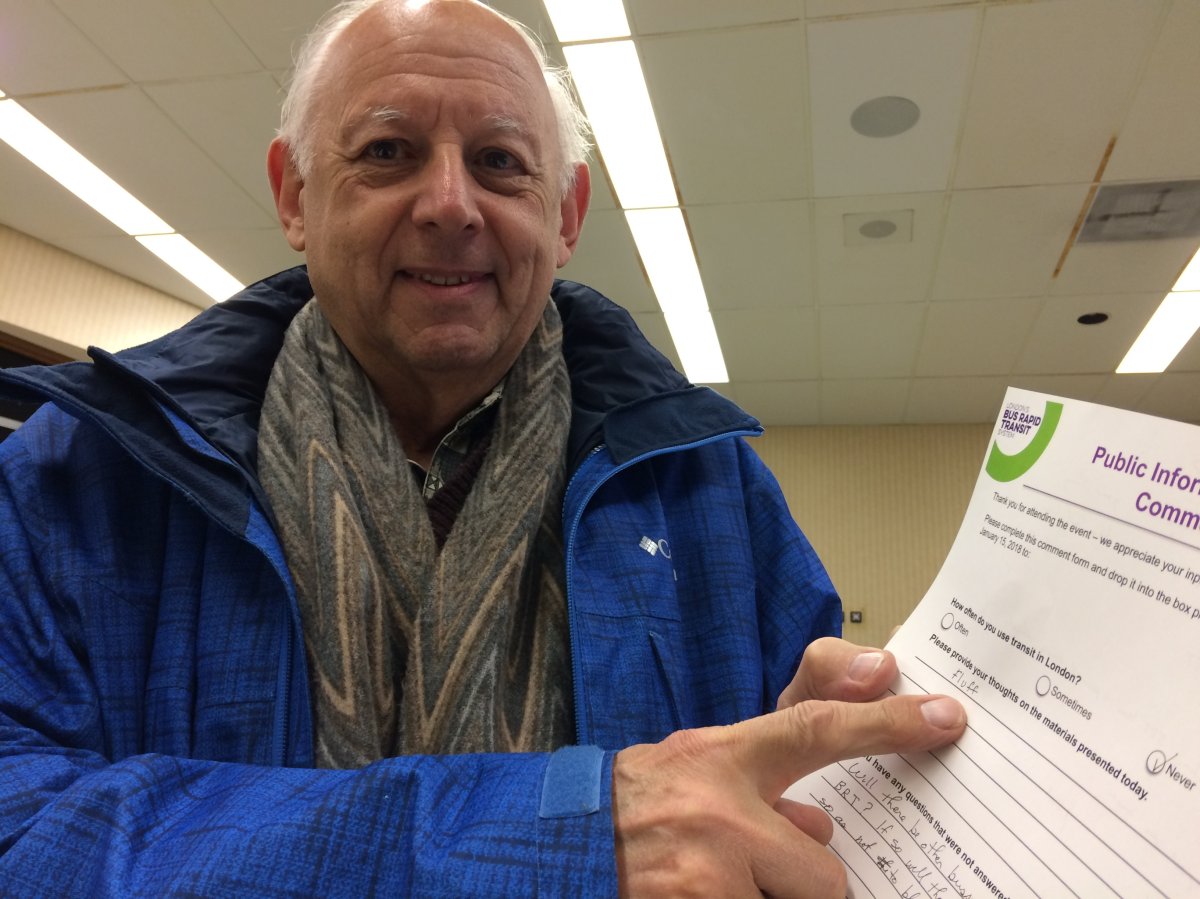Not a single person who attended a bus rapid transit public information centre spoke publically about how they’d use the system.

“I don’t want to sound like a negative nelly, but I don’t take public transit,” began 61-year-old Bill. He’s lived in London all his life, and he was one of around 75 people who showed up for Wednesday night’s presentation and Q&A.
The majority of people in attendance appeared to be in their forties, or older. Their concerns ranged from increased traffic congestion, the project’s timeline and whether there’s still room for change, and the $500-million cost.
“The time saving, from one end to another, would be five minutes,” said Lorne Keith. “That’s it? For spending half-a-billion dollars?”
He doesn’t believe the cost is worth it, and he’d like to see more research into articulated buses.
But that’s work that’s already been done, said project director Jennie Ramsay.
“We’ve looked at options where we just add more buses to the existing system. Those buses will still just get trapped or congested in existing traffic, causing and actually contributing to the delays.”
- ‘Shock and disbelief’ after Manitoba school trustee’s Indigenous comments
- Invasive strep: ‘Don’t wait’ to seek care, N.S. woman warns on long road to recovery
- Norad looking to NATO to help detect threats over the Arctic, chief says
- ‘Super lice’ are becoming more resistant to chemical shampoos. What to use instead
Ramsay sat on a panel next to Katie Burns, the manager of planning services at the London Transit Commission (LTC), and Vincent Ermatinger from engineering consulting firm WSP, answering questions through independent facilitator Glenn Pothier.
A couple of people wondered about traffic congestion on Richmond Row, where the plan suggests one lane of traffic in each direction and one rapid transit lane in each direction on the busy downtown street.
For Paul, it isn’t conceivable bus rapid transit will take enough cars of Richmond Street that one lane of traffic will be enough for vehicles. Especially not on Friday and Saturday nights, when cabs pull off to the side to pick up passengers.
But in cases of emergency, he was assured EMS vehicles will be allowed in dedicated bus lanes. Meanwhile, ridership is expected to grow from the current 23-million person annual ridership that the LTC has now, to 28-million riders per year by 2035.
Paul Paolatto, who has announced his intention to run for mayor in the 2018 municipal election, sat quietly in the back row.
“I was very interested in what Londoners had to say,” the former police services board chair explained.
Back in May, Paolatto said he’d start from scratch on bus rapid transit if he were elected mayor.
“The most responsible course of action would be to allow the electorate to weigh in on this, and if they can’t vote directly on the project, then councillors who support BRT should put ‘pro BRT’ in brackets on the ballot… and people can make an informed choice.”
Michael Toll, who’s lived in London most his life thinks putting the issue to referendum “would be an excellent idea.”
He tried to speak directly to Ward 6 councillor Maureen Cassidy during the information centre, to ask why no one had asked London citizens if they were in favour of the plan.
The question received a round of applause from attendees, but Pothier didn’t put it through to the panel. Their job, he pointed out, is to adhere to decisions made by council.
“Most of us, I’m going to guess, drove here today,” said Paul, as the Q&A drew to a close.








Comments